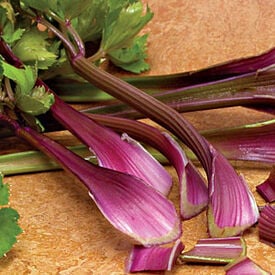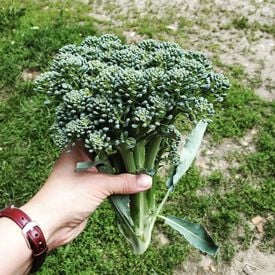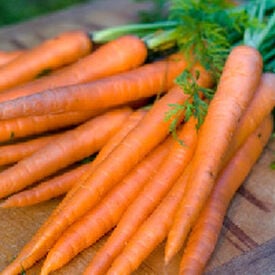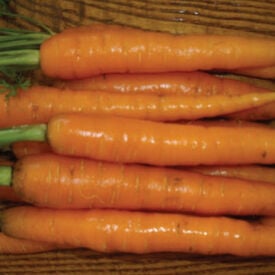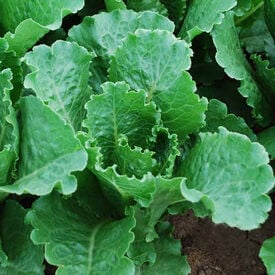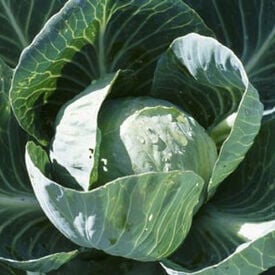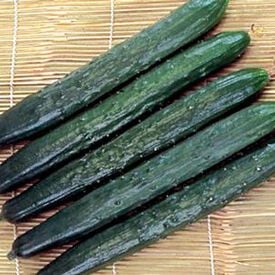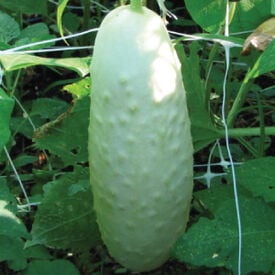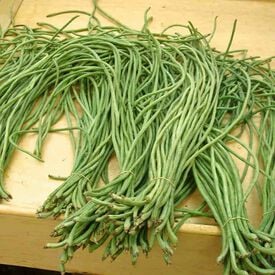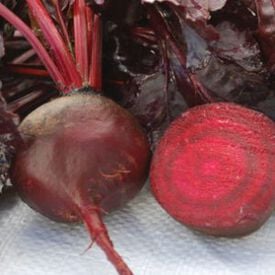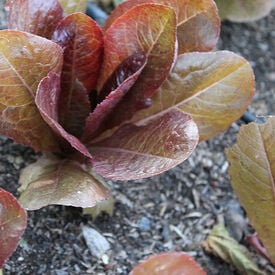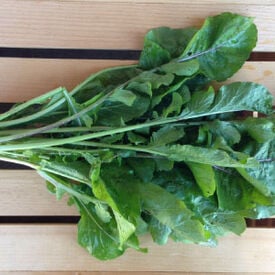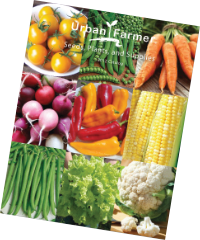The large, red stalks of the Giant Red celery have a wonder flavor, some prefer it over green stalks! The Giant Red celery is a hidden gem. This variety is by far the best tasting celery you can grow! The yellow-pink hearts of the Giant Red are great in salads or soup and it grows great throughout the United States.
Waltham 29 produces incredibly high yields for broccoli! This variety is known for its good color, cold resistance, dwarf compact plant, and big side shoots. Main heads are 4-8" with steady side shoot production after main head is harvested.
The Danver 126 is a durable, multipurpose carrot that produces high yields. Danver 126 was bred by the Eastern States Farmers Exchange from selections of heat resistant strains of carrots. This carrot is improved for better interior color, smoother skin, better uniformity and better yield. Released in 1947. Excellent for home gardens and markets.
The Scarlet Nantes is popular as a sweet baby, slicer, or fresh market variety. A sweet and tender carrot with a cylindrical shape and blunt-tip. Scarlet Nantes have a bright orange-red color throughout. Very popular variety of carrot for eating fresh or cooked. Slow bolting and very popular among gardeners.
The Crisp Mint Lettuce is a big romaine variety with mint green-colored leaves that will be sure to stand out in any home garden! This bold lettuce is only mint in color, not taste. However, its sweet and crunchy leaves will be a favorite addition to any salad or sandwich. Crisp Mint's heads will reach 10 inches tall making it perfect for a container garden!
The All Seasons Cabbage is a very heat resistant cabbage that is resistant to yellowing and will offer a nice flavor in any dish. This cabbage produces fine heads that are about 10-11" across and average about 11-14 pounds.
The Tasty Green cucumber is a burpless cucumber that is crisp and juicy. This hybrid is a deep green cucumber with long white spines. The Tasty Green is a great cucumber for hot and humid climates. The long 12" inch burpless cucumbers have an excellent, bitter free flavor. This variety is an excellent cucumber for greenhouse growing as it produces high yields.
The White Wonder cucumber is a white cucumber with a fresh, crisp texture. This variety was introduced in 1893 and has since been a fun cucumber to grow in the garden. White Wonder looks great in salads to add that extra pop of color. This plant grows cucumbers to be about 6-8" long and 2-3" wide. The White Wonder is known for its great crisp texture that is perfect for fresh eating or tasty pickles!
A beautifully bright and vibrant green bean that grows extra long when mature! Matures quick and has a delicious and crisp bite.
Bull's Blood beet, scientifically known as Beta vulgaris, is a striking and versatile variety of beetroot that has gained popularity for its unique characteristics. This heirloom variety has a fascinating history, dating back centuries to Europe, where it was initially cultivated for its edible leaves rather than the root. Its name, "Bull's Blood," is derived from the deep burgundy-red color of its leaves, which resemble the color of ox blood. Over time, its sweet and earthy flavor profile has made it a favorite among chefs and home gardeners alike. In terms of appearance, Bull's Blood beets typically grow to a medium size, roughly 2-3 inches in diameter, and have a round to slightly flattened shape. The seeds of this variety are easy to come by and can be sown directly in the garden or started indoors. Bull's Blood beets are relatively quick to mature, taking about 50-60 days from seed to harvest. The leaves are a deep red, while the root itself is a dark purplish-red, making it visually appealing on the plate. Bull's Blood beets exhibit some resistance to common beet diseases like Cercospora leaf spot and Downy Mildew, although specific resistance levels may vary depending on growing conditions. When properly cared for, they can yield a plentiful harvest. To ensure optimal growth, it's recommended to space the beet plants about 2-4 inches apart in well-drained soil with full sun exposure. Adequate moisture and consistent watering are essential for healthy growth. Whether you're looking to add a pop of color to your garden or enhance your culinary creations, Bull's Blood beets are a delightful choice with a rich history and vibrant character.
The Merveille Four Seasons is a French Bibb lettuce type that produces rich deep reddish leaves with bright cranberry red tips. This 12-16 inches lettuce has a wonderful butter taste and will hold its flavor in hot weather. The rich red leaves surround a small, 8-12 inches pale green, tight heart. Enjoy the Merveille Four Seasons chopped up in a salad for fresh flavor and a pop of beautiful color.
Astro Arugula is a popular arugula type with spicy flavor! This standard arugula is grown for it's long, green leaves. Astro is fast growing and will withstand cold temperatures. This arugula is best harvested at baby size. If you want to spice up your salads and meals, then the Astro Arugula will be the perfect addition to your garden!
